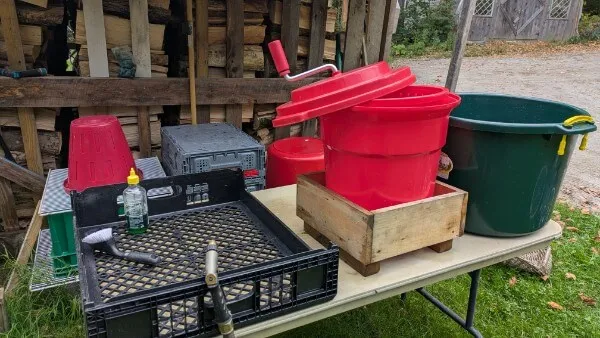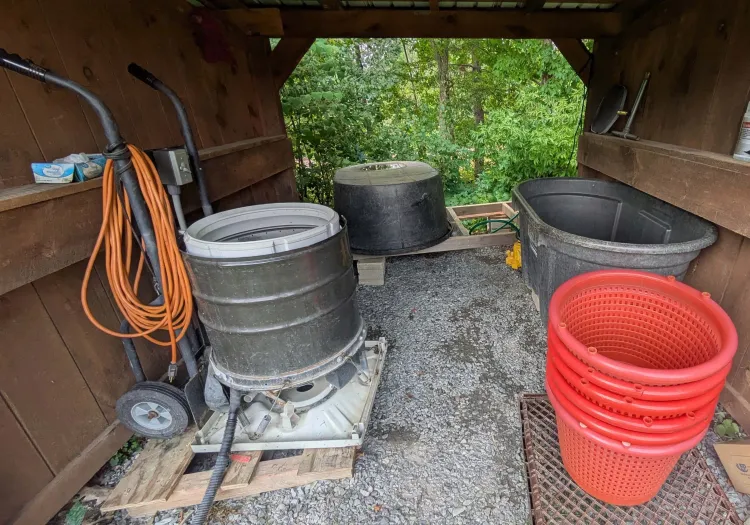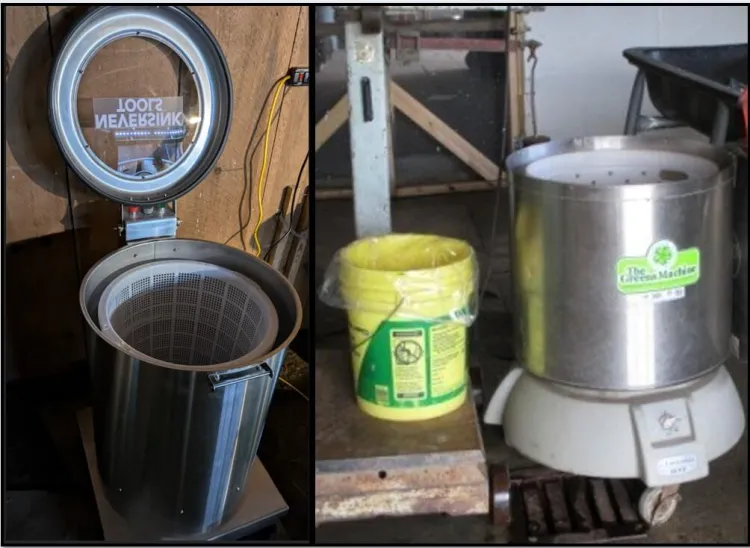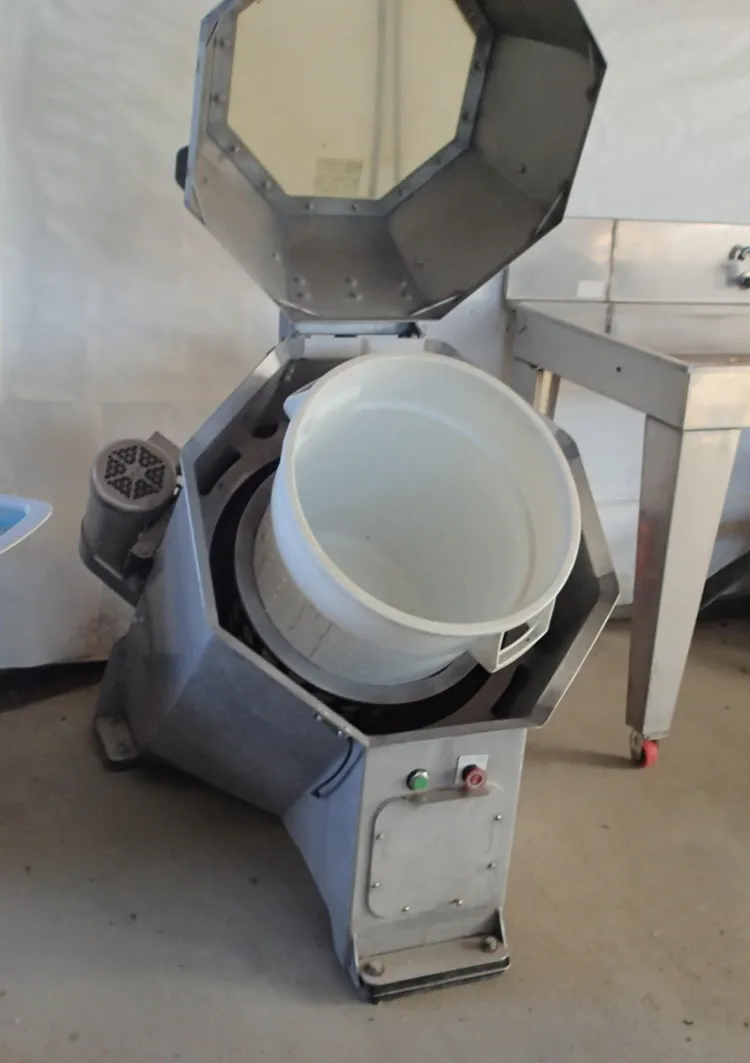Spinning leafy greens to remove excess water is a common practice that can increase wash-pack efficiency and increase product quality. Greens spinners that work well keep greens from being too wet going into storage, which reduces their shelf-life and can promote the growth of human pathogens. Greens spinners should be washable and properly sized for a farm’s volume of production. Manual-crank institutional grade spinners (5 gal.) are typically hygienically designed and can efficiently accommodate up to 25 lbs. of product. Converted washing machines can easily accommodate several times that amount, but they cost more and need to be properly converted to reduce risk of cross contamination. Similar-scale electric spinners, purpose-built for market-scale operations, can be more pricey than washing machine conversions, but are still an affordable alternative. Large industrial spinners, or greens lines with elevators and conveyors, have many desirable features but are not practical or affordable for smaller operations.

Design Goals
- Quick removal of water from leafy greens surfaces, without damaging produce.
- Spinner basket is non-porous, easily removed, and can be cleaned completely.
- Spinner unit is stable and easy to operate safely.
- Spinner is positioned for efficient transfer of produce from wash station.
- Spinner is big and fast enough to accommodate the farm’s typical harvest volume without causing a traffic jam.
Design Elements
- Removable spinner baskets are made of rugged plastic or stainless steel that can withstand repeated use and removal.
- Manual spinners (2.5 or 5 gal. capacity) are used for a single employee processing 5 to 25 lbs. of greens in a typical processing session. Converted washing machines can handle up to 75 lbs. per session.
- For manual spinners, a stable tabletop and well-maintained spinner gears support smooth and efficient spinning of a balanced, 3/4- full filter basket. Many growers build custom table-top “bumpers” to snuggly secure the spinner table-top.
- Converted washing machines have snug and stable basket inserts and are secured to the floor to prevent “walking.” Shut-off timers are installed to increase efficiency.
- The exterior panels of converted washing machines may be safely removed to expose the frame and drum of converted washing machines. This can mitigate food safety risk by allowing the drum to dry more rapidly between sessions, inhibiting the growth of microbes and mold.
Benefits
- Proper spinning of leafy greens can increase shelf life and reduce food safety risk.
- Appropriately sized spinners support wash-pack efficiency.
- Removable, cleanable and dryable spinner components minimize risk of cross-contamination.
Photos



Authors: Hans Estrin and Vern Grubinger, UVM Extension
This work is supported by the Food Safety Outreach Program Name, project award no. 2023-70020-40688, from the U.S. Department of Agriculture’s National Institute of Food and Agriculture. Any opinions, findings, conclusions, or recommendations expressed in this publication are those of the author(s) and should not be construed to represent any official USDA or U.S. Government determination or policy.
